Why Fluid System Filters Are Critical for Reliable Operations
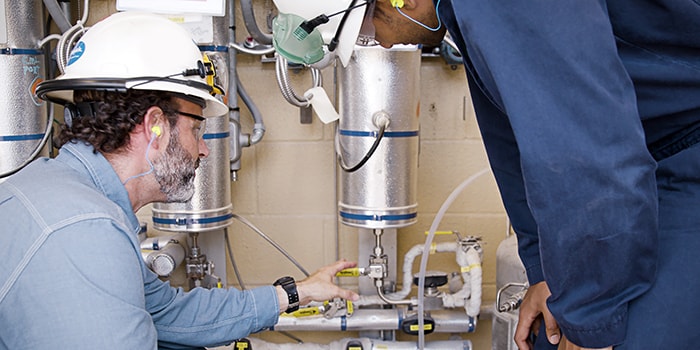
Fluid System Filters Explained: Why They’re Critical for Reliable Operations
Contaminants can wreak havoc on industrial fluid systems. Unwanted particles can damage critical components, interfere with accurate sampling and analyzing, throw products off-spec, and cause other downstream problems.
But contamination is a problem that can be remedied by installing the right filters, which trap and contain particulates, at critical points throughout your systems. By applying the appropriate gas and liquid filtration methods, you can mitigate the problems that may arise when contaminants interfere with your important systems.
Read on to learn more about:
- Why filters are important
- Where filters should be installed in most industrial fluid systems
- The different types of filters
- Best practices for filter installation and maintenance
The Importance of Fluid System Filters: Protecting Your System from Contaminants
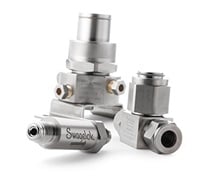
A worn or damaged seat in a valve may fail to completely shut off flow.
When particulates flow through a valve or regulator, they have the potential to get trapped between the component’s stem and seat, where they can cause premature wear and damage and interfere with the component’s desired operation. A worn or damaged seat in a valve may fail to completely shut off flow. A damaged pressure reducing regulator seat can lead to excessive downstream pressures. In backpressure regulators, it can cause upstream pressure loss. Each situation can lead to operational and safety issues in your systems.
Where to Install Fluid System Filters
Filters can alleviate the problems caused by unwanted contaminants, and they should generally be installed at a few common locations in most industrial fluid systems. These locations include:
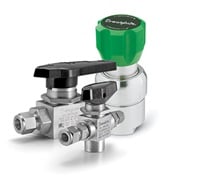
Near cylinder gas dispensing. Process gasses are typically delivered into your fluid system via cylinders. While properly maintained cylinders should reduce the need for contamination prevention, the condition of the gas cylinders can vary. The interiors of damaged cylinders may flake off into your fluid system as gas is delivered, creating a need for proper filtration directly downstream of the cylinder. Some prefabricated gas distribution systems feature built-in filtration that can help prevent contamination at this critical point.
Near valves and regulators. For the reasons described earlier, protecting your valves and regulators from contaminants is important. Installing filters directly upstream from a critical valve, regulator, or other point of use can help stop particulates from flowing through the component and interfering with proper operation.
Near pumps. Industrial pumps are major pieces of machinery with many moving parts and, thus, can generate small debris over time. It can be beneficial to filter process media flowing downstream from a pump to catch the resulting contaminants before they reach other parts of your process.
Near online analyzers. Online analyzers are sensitive pieces of equipment, and contaminants can interfere with the integrity of your sample’s composition. And though it is commonly understood that filters should be installed before process fluid flows to an analyzer, it is important to select an appropriate filter for this specific need. Some filters may not be suited to the process fluid and can miss particulates and lead to dirty samples. An oversized filter with too much internal volume may cause time delay—too much of which can throw off the accuracy of your sample. Consult with your supplier to identify the right type for your analyzer.
Different Types of Filters
As noted, it’s important to select the right type of filter to suit the needs of your fluid system. Your filter supplier should be able to help guide you toward the right choice. Available filters typically include:
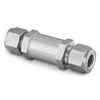
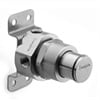
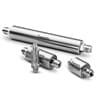
No matter which type of filter is required for your application, it is also important to be sure your filter is compatible with the right type of end connections for your needs. Additionally, your filter’s materials of construction must be able to withstand the service needs of your application. For example, certain volatile fluids and gases may not be compatible with common stainless steels and may require more robust alloys for not just your filters, but for other critical fluid system components as well.
Properly Installing and Maintaining Your Filters
To be confident in your filter’s performance, it is important to install it properly.
Filters typically install similarly to tube fittings. First, always follow the flow arrow to determine the specific inlet and outlet ports to identify directional flow. Follow the manufacturer’s published instructions throughout the installation process. When installing a filter before a valve or regulator, the valves should be mounted so that the weight of the valve is supported by the bracket, rather than the tube or pipe. Additionally, the mounting bracket should be substantial enough to absorb the torque of removing the element. Generally, filters should be installed where they are readily seen, accessible, and protected from damage.
Remember that filters must usually be cleaned and maintained on a recurring basis in order to operate effectively. Over time, the filtration element will collect contaminants and clog. You may choose to clean or replace your filter based on your preventive maintenance schedule, or you may do this if you see a drop in downstream pressure, which may indicate a dirty filter.

The following steps can be taken:
- Isolate the filter from the system
- Stabilize the body with a wrench and loosen the filter’s bonnet
- Remove the dirty or clogged filtration element and replace with a new one
Good filtration practices can help protect critical components throughout your industrial fluid systems, all while contributing to reliable results and high-quality products. Consult with your filter supplier to be sure you have the right filters for your needs throughout the entirety of your important fluid systems.
Interested in learning more? Explore more on Swagelok Reference Point, where you can read about operational best practices for your fluid systems. And if you want to go even deeper, consult with us about available training opportunities to sharpen your skills for better outcomes.
Related Articles
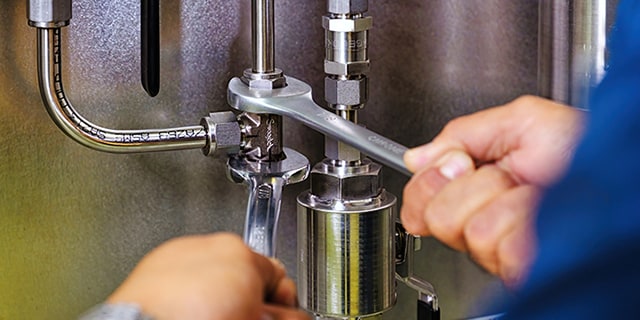
Why You Should Not Intermix Tube Fittings
Learn why intermixing or interchanging tube fitting components from different manufacturers can lead to poor fluid system performance.
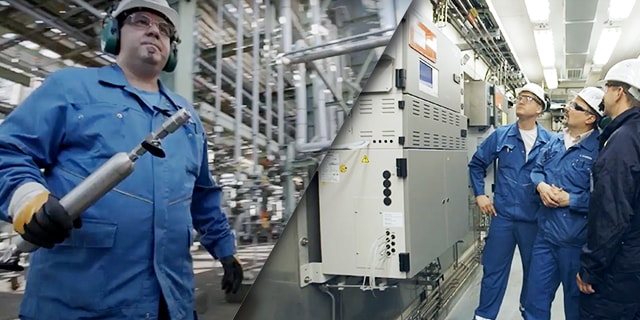
Analyzing Your Sampling Needs
Trying to determine whether grab sampling or online analysis is the best option to monitor your process conditions? We put together a convenient checklist to help guide you to a solution that suits your operations.
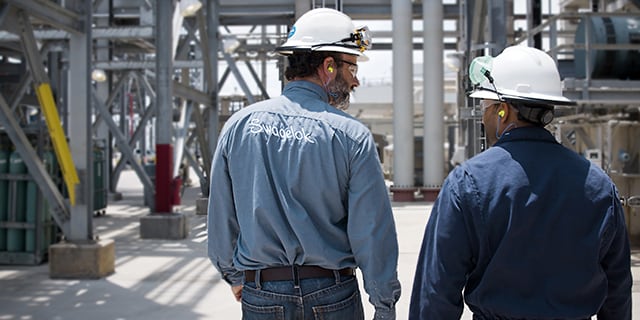
Why Relief Valves Are Essential for Chemical Plant Safety
Learn how to improve chemical plant safety and protect sensitive equipment by designing relief valves into critical applications to prevent potentially dangerous overpressurization.


